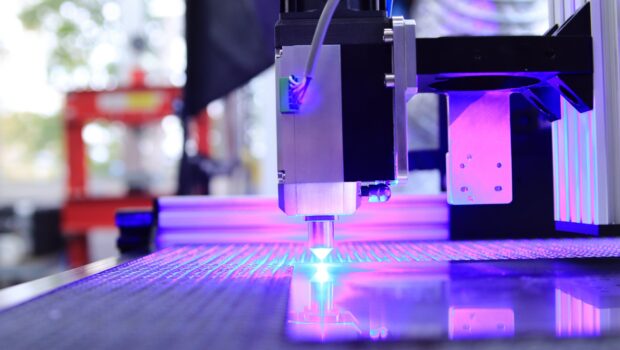Laser Technology Market to Reach Over $30 Billion
If you like science fiction movies, two common themes have definitely caught your attention. One, people have much more options to have fun. Second, almost everyone uses laser-fired weapons. The first of these is still possible today on sites such as $1 deposit casino Canada, and the second is still nothing more than a dream. However, this does not mean that laser technology is not currently used. On the contrary, we actively use laser technologies both in our daily lives and in many industries.
This is so common that a report by Meticulous Research predicts that the laser technology market will reach $30.3 billion by 2028. So, what’s the reason for this? In which industries and which products do we use lasers? Why is this market growing so fast? You can find the answers to these questions below.
What Is Laser?
Let’s start with the basics first. The laser actually stands for “Light Amplification by Stimulated Emission of Radiation.” To create a laser, we energize the atoms so that they rise above a certain threshold. The amount of this energy determines the wavelength of photons, that is, particles of light. The wavelength also determines the colour of the laser light obtained. You can think of it as a “recipe.” By changing the amount of energy, we can obtain lasers of different colours and different powers.
Fine, but what are we doing with these lasers? Since we don’t have weapons like storm troopers, what do these “coloured lights” do?
Information Technologies
As the size of the data grows, companies are trying to find faster and safer data transfer methods. Laser data transfer is one of the leading alternatives in this field. Laser data transfer, which first started experimentally in the 1990s, has now become a reality that can provide data transfer at 2.5 terabits per second over short distances. In other words, we can perform super-fast data transfer in real time.
In this system, binary data can be reflected with 16 different types of light, and each pixel of the visual files can be coded. In other words, data is not only transferred, but it can also be strongly encrypted. Most analysts think that laser-based internet technologies will become a standard in the future. Fibre optic cables are just a simple example of this. Fibre internet is a technology that uses semiconductor laser diodes, and it is obvious how superior it is in terms of speed. Laser-based internet technologies, on the other hand, aim to transfer data at incredible speeds with only laser beams by eliminating cables completely. To give you an idea, let’s give a simple example. On October 18, 2013, laser data transmission was carried out between the Moon and Earth. As a result of the work done by a group from the Massachusetts Institute of Technology (MIT) and NASA, data was sent from the Earth’s surface to the Moon’s surface at a speed of 622 Mbit/s.
Health Technologies
Laser has been used in health technologies since the 1960s. For example, the CO2 laser has been widely used in tumour treatments because it can easily vaporize tissues. Today, similar technologies, such as the CyberKnife, which basically use the same technology but are much more sensitive, continue to be used. Lasers with different properties are currently used for kidney stone breaking, cardiovascular surgery, neurosurgery, digestive system disorders, skin diseases, otolaryngology, orthopedic problems, and aesthetic surgeries. We also use some of these in our daily lives. For example, laser technology is used in epilation devices.
Holograms
No, we’re not talking about 3D video recordings that you can play in the middle of your living room. Take out your credit card and look at its logo and flick it slightly left and right: it looks like it’s moving, right? What you see is actually a hologram and a real three-dimensional recording of the original object, in other words, a three-dimensional laser photograph. A piece of 3-dimensional visual information is recorded and stored with laser technology and transferred to a multidimensional environment by adding a motion effect.
This is not just a visual gimmick. Holograms contain depth and parallax, so they really display the object and its surroundings in a three-dimensional way. It is not possible to scan, photocopy, or print the hologram. At the same time, they deteriorate when they are separated from the surface on which they are applied, so it is not possible to use them out of purpose.
This seemingly simple technology is expected to replace the LED televisions in the future. It is possible to adapt hologram technology to televisions and obtain real three-dimensional images. These will look quite different from current televisions (reminiscent of a kind of aquarium) but will be able to produce 3D images that can be viewed from any angle without the need for glasses.
The importance of laser technologies continues to increase day by day, and we will continue to benefit from them as we shape our future. Therefore, it is normal for the laser technology market to continue to grow. It may even become one of the most profitable industries in the future. Maybe everything we see in science fiction movies will become a reality, who knows?
Photo by Opt Lasers on Unsplash
















